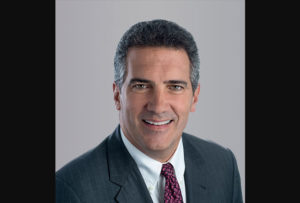
Work-life balance has become significantly important to new millennial parents. Millennials don”™t want to spend hours commuting to work in the city. Instead, these new parents want to be closer to their families and have access to urban life. In fact, according to the 2017 U.S Census Bureau, 25- to 29-year-olds are about a quarter more likely to move from the city to the suburbs; older millennials are more than twice as likely.
A growing number of millennials are fleeing big cities in search of the traditional American dream of homeownership in the suburbs. Older millennials, who had previously shunned the suburbs in favor of the work-live-play aspect of the cities, are now seeking homes in the suburban towns within Fairfield and Westchester counties that offer good schools, upscale shopping and a lower cost of living when compared to New York City.
Young families want to maintain their work-live-play balance in the suburbs, but do not want to give up New York City altogether. Connecticut and Westchester are ideal locations for families trying to achieve that balance. They provide access to the Long Island Sound and all the amenities of a suburb close to New York City.
As millennials move to the northern suburbs, the commercial real estate market will continue to improve as well. It has climbed steadily over the years as the country recovers from the 2008 recession and corporations are rethinking their space requirements and location. According to Cushman & Wakefield research, new leasing activity in Fairfield and Westchester counties continues to increase each year.
The constant theme that we hear from companies is: “We have to attract and retain talent!” With that in mind, we”™re seeing companies follow their talented millennial workers out to the suburbs, taking space in office buildings throughout Fairfield and Westchester counties. In particular, they are leasing space along major transportation lines and TODs (transportation oriented districts), such as downtown White Plains and the South End of Stamford. These areas highlight where the live-work-play trend continues to transform the market and drive potential occupancy growth.
As the corporate race for millennial and Gen Z talent continues, buildings near train lines and transportation hubs stand to gain the most from the potential uptick in commercial real estate activity. Not only do they make commuters”™ lives easier, but many millennials are choosing to live near rail lines to keep Manhattan within reach. This urban influence will continue to play an important role as tenants consider opportunities in communities such as White Plains ”” which will be seeing additional benefits from the almost $100 million Metro-North White Plains train station renovation project.
As millennials trade in the city for the suburbs, so have companies. Companies that were traditionally located in cities are beginning to re-migrate to the suburbs in order to keep their millennial employees. We”™re just seeing this trend in commercial real estate. For example, earlier this year CA Technologies, headquartered in Manhattan, took 23,000 square feet at 200 Elm St. in Stamford. Additionally, Charter Communications expanded its real estate portfolio in the region, leasing 300,000 square feet between 201 Tresser Blvd. and 400 Atlantic St. in Stamford. Charter is also building a 500,000-square-foot headquarters in downtown Stamford.
These moves are also driving some of the residential market. While city living is cool, it”™s less practical and very expensive for families. As New York”™s popularity continues to soar, so has its costs. It used to be that what is bad for New York City is good for the suburbs. Now, I think, what is good for New York City is great for the suburbs. For example, if Fairfield or Westchester County attracted just 3 percent or 4 percent of the New York City demand, the suburban commercial market would tighten instantly.
A “hub and spoke” strategy is also emerging for New York City-centric companies. New York City-based companies are looking to expand and will create a satellite office in the suburbs instead of taking more space in the city. If you have 100,000 square feet in New York City and you need to expand, taking 50,000 square feet in the suburbs not only lowers your cost of occupancy, but also gives your workforce an opportunity to choose their location.
The needs and desires of young families will drive companies to come out here, and it”™s a war for talent out there. As the millennial demographic shift to the suburbs continues, companies will chase them to allow employees to have a better quality of life. They are trying to strike a balance between commuting and affordability. Fairfield and Westchester counties”™ commercial real estate markets are well positioned for this demographic shift and provide a solution for both these companies and their employees.
Jim Fagan is the managing principal of Cushman & Wakefield, responsible for the management of its Stamford and Westchester County offices. Since joining C&W in 2003, Fagan has been responsible for the oversight of several hundred millions of dollars in transactions annually. He can be reached at Jim.Fagan@cushwake.com.

















